-
TrimTouring
-
Engine2.5L Flat-Four
-
Power182 HP / 176 LB-FT
-
TransmissionCVT
-
DrivetrainAWD
-
Engine PlacementFront
-
Curb Weight3,588 LBS
-
Seating2 + 3
-
Cargo33.0 Cu-Ft
-
MPG26/33/29
-
Base Price$35,270
-
As Tested Price$35,495
Our dog-toting Subaru Forester days are over. The 2019 Subaru Forester Touring that lived with us over the past year has moved on to new pastures, and now it’s time for the verdict.
We took this Forester in to see if Subaru’s latest iteration of the historically quirky (and sometimes quick) crossover was able to charm us over the course of many months. Subaru completely redesigned the Forester for the 2019 model year, and it’s largely unchanged headed into the 2021 model year. With the new model, we lost the turbo engine option and gained more utility. Its design got a little less out-there, and the tech and safety enhancements were a big step forward.
Few issues plagued our Forester over the course of a year. The biggest problem cropped up shortly into the Covid-19 pandemic when the large sunroof began to leak. Of course, this was fixed under warranty, and the car spent very little time in the shop. The smell of sitting water stuck in our nostrils after this incident, but it went away quickly after. Another issue we ran into was the breakage of windshields. When we gave the Forester back, it was on its third windshield, which is far too many for a little over 20,000 miles of driving. It could be poor luck with rocks, but every time we ended up with a chip, it would quickly transition into a worrisome and large crack. Beyond this, we made regular 6,000-mile maintenance stops at the dealer for oil changes and lived a generally worry-free life.
Some of us spent more time with the car than others, as Covid-19 precautions kept us from frequently sharing cars around, but that only gave us a greater breadth of experiences. We even managed to get a big road trip in before the pandemic, which you can read about here.
Below, you’ll find all of our editors’ final thoughts on the Forester.
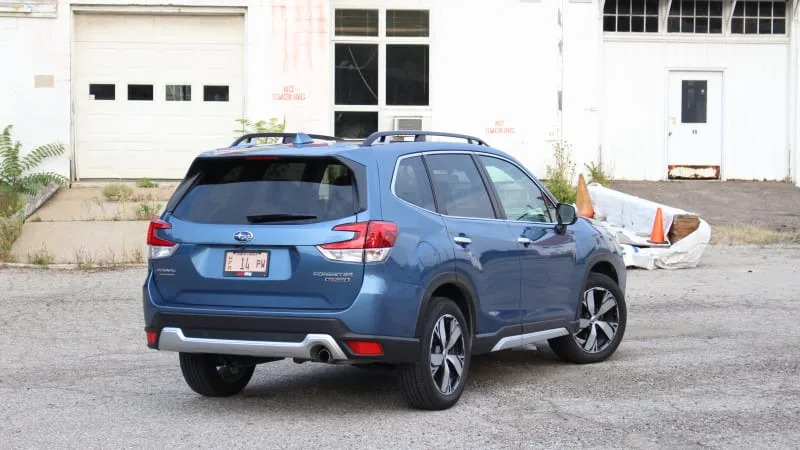
Road Test Editor Zac Palmer: I put a large number of highway miles on our Forester, which is one of the reasons why it left us with over 21,000 on the clock. My mile-munching time was largely a mixed bag. Highlights include a comfy ride and stellar visibility. On the negative side, the seat is only comfortable for a few hours at a time, after which it becomes stiff, forcing stretch stops. It’s also noisy thanks to the 2.5-liter flat-four mashing away and a lack of road noise insulation.
Unlike turbocharged Foresters of the past, merging onto the highway in this new Forester is dreary. The 2.5-liter flat-four makes 182 horsepower and 177 pound-feet of torque, which just isn’t enough to raise any pulses when it’s dragging around 3,449 pounds. Things become even sadder when you put passengers and luggage into the rear, too — weight is not your friend. Fuel economy hovered between 29-31 mpg on long highway trips. Averages dipped as low as 24-25 mpg when we kept to the city in commuting. Those numbers fall just short of the EPA estimates, but do keep in mind that our Forester is the highest trim model with the highest weight and largest possible wheels.
Over the months, I ended up seeing the Forester as more of a tool than anything. It hits all the fundamentals with a big cargo area, spacious backseat and solid tech, but I’m left cold. No compact crossovers at this price point are objects of desire, but many of them look better (RAV4, CX-5, Rogue) and are just as adept at most of the tasks this Forester excels in. There’s no standout feature or must-have angle, and because of that, the Forester melts into the background.
Associate Editor Byron Hurd: I spent precisely one weekend with the long-term Forester, but it was an eye-opening one, coming shortly after my move to the Detroit metro area and during one of the few significant snowfalls we've seen in my brief time here. With our winter tires on it, the Forester was an absolute monster.
The combination of the Forester's ground clearance, snow-rated rubber (wrapping gold Sparco wheels, pictured above) and all-wheel drive proved more than a match for nature's lack of hospitality. More than once, it left passengers wide-eyed after trucking through snow drifts that would have easily beached just about anything lower on all-season rubber. Tires, folks. They matter.
It certainly left a good impression, but since I spent so little time with it, I wouldn't say my experience was necessarily representative of our year with Subaru's compact crossover. That said, if winter capability is a big priority for you, the Forester should be on your to-drive list, but even then, I'd probably put a few others ahead of it due to their all-around appeal; see Zac's parenthetical above, as my thoughts echo his.
News Editor Joel Stocksdale: I also didn't spend a whole lot of time in the Forester, but I came to similar conclusions as Zac. The Forester is an eminently practical machine, but not one that's particularly enjoyable. The powertrain is the biggest offender. The engine is coarse, noisy, and not particularly peppy. And all those characteristics are amplified by the CVT that has a lot of the annoying "rubber band" feel other companies have managed to tune out of their CVTs. The steering is light and lacking feedback, and there's a fair bit of body roll. It does have a decent ride, though, and the good visibility and small size make it easy to maneuver.
Besides the mechanical bits, the Forester doesn't inspire much love from the aesthetic or comfort departments. It's a slightly lumpy box as far as styling is concerned. It has various lines and creases that try to add interest but don't seem particularly cohesive. The interior is much the same way with an oddly wide array of materials, mostly plastics that range from glossy and hard to rubberized and textured. Most of those materials don't feel particularly special, though they're well put together. The infotainment is mostly easy to use, but adjusting the displays on the instrument cluster and the screen on the top of the dash can be confusing. Then there's the front seats that are rather unpleasant. My main complaints were the lack of support and an incredibly short lower cushion that will wear on the long-legged.
But the Forester does have a couple of perks. One of those is the massive interior. People of nearly any height and build will fit in the back seat nicely, so if you have a family with lanky teenagers, this will be a perk. The visibility, as I've previously written, is second to none, thanks to the tall roof, low window sills and thin pillars. The airy experience is further enhanced by the Forester's traditionally enormous sunroof, which will again likely please backseat passengers. And of course, the boxy shape pays dividends in cargo space.
For some people, the spaciousness, easy maneuverability and standard all-wheel drive will make this a useful little box. But I would have a hard time recommending it over many competitors that might sacrifice a bit of space, but return better styling, performance, fuel economy, refinement and comfort.
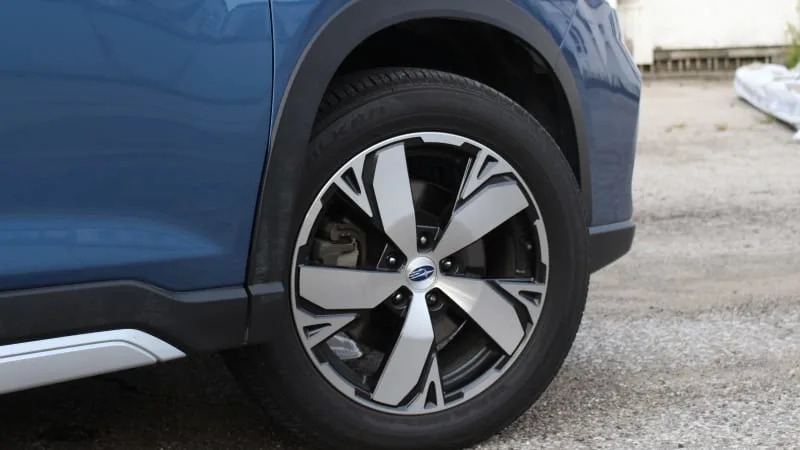
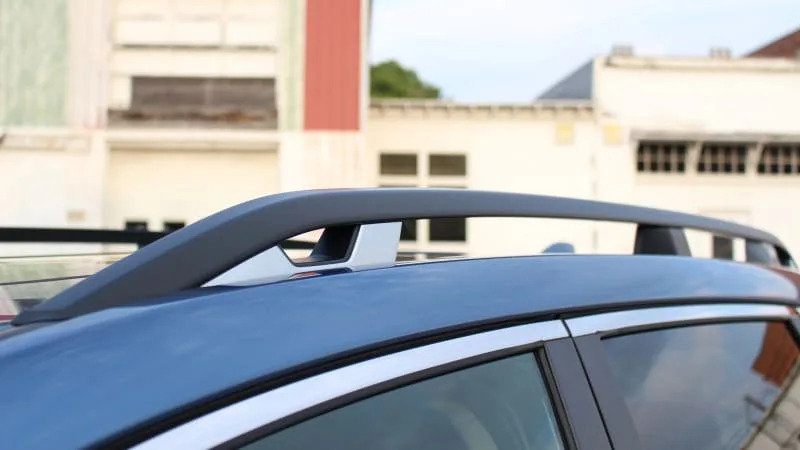

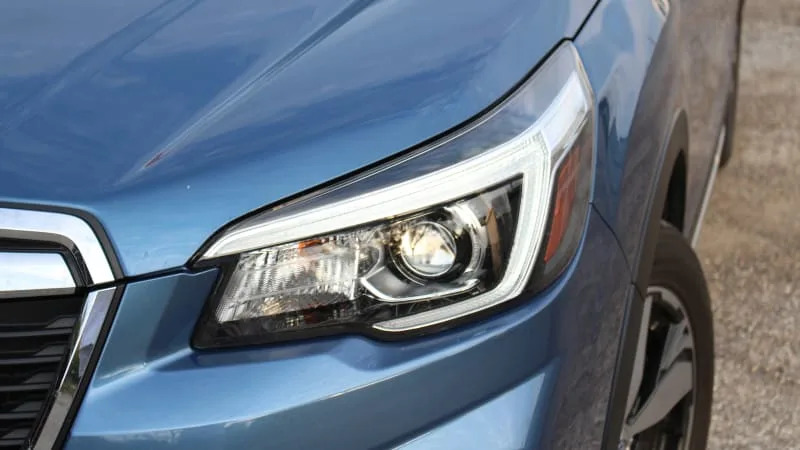
Senior Editor, Green, John Beltz Snyder: My opinion of the Forester changed a lot over time. At first, I was excited about it, and was particularly enamored with the DriverFocus feature. I thought the fact that it could recognize me, and put various car functions like seat position into my settings, was neat, especially as the car got passed around a lot among editors and producers pre-Covid. Eventually, I got sick of how eagerly this car will unnecessarily nag at you when it inevitably assumes you're not paying close enough attention or drifting too close to the edge of the lane.
I spent a lot of time with the Forester on the highway, frequently on trips Up North. Those drives made me of two minds. First, I was impressed with the sheer amount of cargo it could hold. On the other hand, it's not very powerful. On lengthy two-lane highways, encountering numerous slowpokes, overtaking maneuvers meant spending much more time in the oncoming lane than I'd have liked.
But then, when I really needed it, the Forester was impressively capable. It's confident, and even a little entertaining, in the snow (especially with winter tires on it). It also helped get me to some of my favorite spots deep into the woods on state land in Northern Michigan, where it encountered rough paths, hills, mud and more than its fair share of sand. Not having to haul camping gear or heavy sporting equipment over rough terrain felt like a luxury. That vast rear opening and wide cargo floor make for a great base of operations for fishing, target shooting or picnicking, especially when you don't have to hike back very far when you're swapping out gear or assembling sandwiches. Sure, most of my time with the Forester was spent doing daily drudgery, but when you want to get off the beaten path, this Subaru helps you — and even encourages you — in your endeavors.
I will say, though, that when I had both the Forester and the Outback in my driveway at the same time, I gravitated much toward the latter. It's slightly more expensive, but I think the Outback more than makes up for it in looks, perceived quality and smoothness without sacrificing roominess. Plus, you can opt for a turbo motor in the Outback to make those highway passing maneuvers considerably more brief.
Editor-in-Chief Greg Migliore: I liked the Forester, but I didn’t love it, which is unfortunate as Subaru relies on a bit of emotion and a spirit of community to foster interest and sales of its vehicles. Previous generations of the Forester, especially turbo-powered ones, were more interesting, though that’s not a deal-breaker for me. The exterior styling is generic and this iteration has lost some of the appeal of its predecessors. The interior also feels a bit dated, something I observed even when this ute was brand new.
All that said, it’s very solid. If you like Subarus, you might be a bit disappointed in this Forester compared with its forerunners, but the let-downs aren’t enough to send customers to Honda or Toyota. I’d give it an all-around grade of a “B” after its year in the Autoblog long-term fleet. More than passing, but nothing special.
As expected, it’s a solid vehicle for family use. I took it Up North, as we say in Michigan, multiple times, and there’s plenty of room for camping, tailgating and other outdoor adventure supplies. Give credit to Subaru, which knows its audience and delivers in that respect. The Forester was sure-footed in winter, and I plowed through snow storms with confidence — and style, with the winter rubber wrapped in gold Sparco wheels left over from our old WRX. You’d be surprised at the things we find in the basement of Autoblog.
Related video:
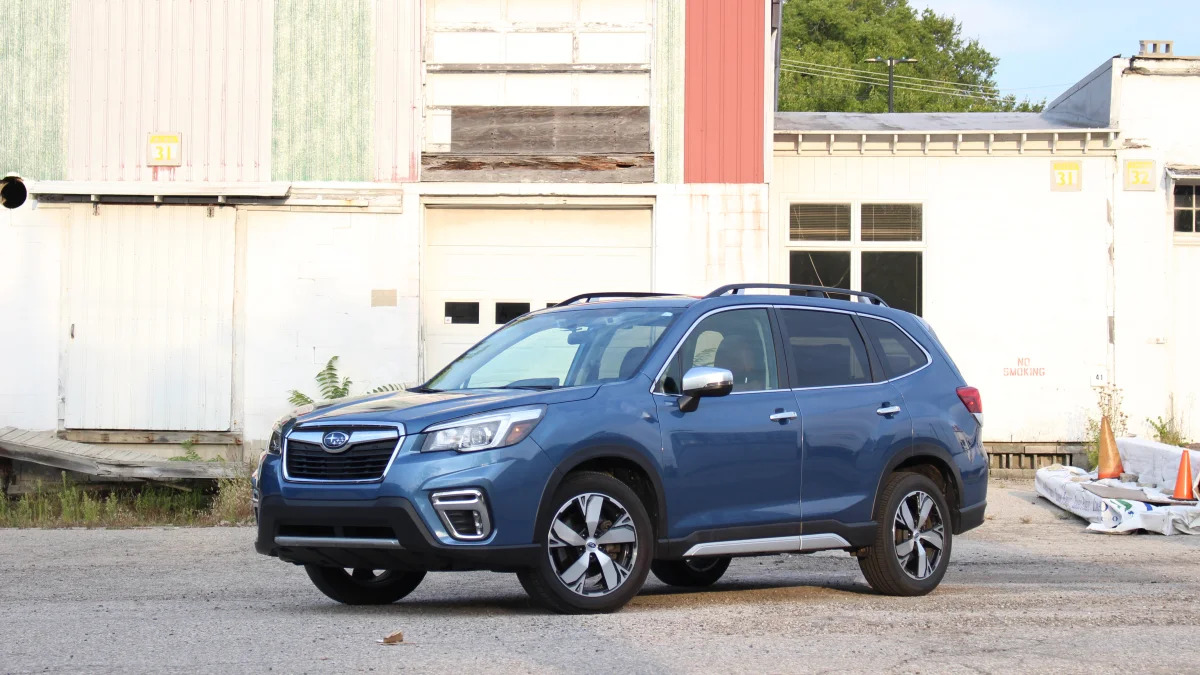













Sign in to post
Please sign in to leave a comment.
Continue